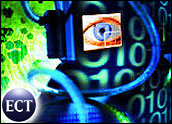
During an annual outing of college chums this past summer, one of the bunch, following a flurry of digital picture taking, smiled wryly and said that he’d recently shot his last roll of Kodachrome 25.
For those unfamiliar with film stocks, Kodachrome 25, touted by many as the best film ever manufactured in the United States, was discontinued in 2001. That means my mate had kept his stockpile of K-25 stashed in his fridge for quite some time.
His comments set off a wave of nostalgic anecdotes about film. “I’ve got pictures from the ’70s shot with Kodachrome 25, and they look like I shot them yesterday,” observed one codger.
“Made posters from the stuff I shot with that film and couldn’t see the grain in ’em with a magnifying glass,” added another.
We all agreed that while digital cameras have many merits over film, they lack personality when compared to the characteristics different film stocks could give a camera.
Take Your Pick of Film Stocks
Ah, but we were forgetting that things digital are master mimics of the analog world. Want your digital photos to assume the personality of film? All you need is the right software, such as Exposure ($199) from Alien Skin of Raleigh, N.C.
Exposure is designed to work with photo editing programs like Adobe Photoshop or Elements, Corel Paint Shop Pro and Macromedia Fireworks. I used it with Ulead PhotoImpact 8, and it worked with that program, too.
You also need some horsepower to use the software — at least a 1 GHz Mac G4 or 2 GHz P4 PC with 512 MB of memory.
Exposure lets you choose from a wide array of virtual film stocks.
Color films include Fuji Velvia, GAF 500, Kodak Ektachrome and, of course, Kodachrome 25. You can also emulate a variety of cross-processing techniques.
Cross-processing creates, depending on your taste, interesting or macabre images by processing photos in unorthodox chemical solutions.
Black and White Excellence
Black and white films include Fuji Neopan, Ilford Delta and Kodak T-Max and Tri-X. There are also some interesting Ilford and Kodak infrared film emulations.
Black and white special effects include blue toning, polysulfide gold toning, several sepia variations and green-blue sensitive orthochromatic processing.
While most photo editing programs contain filters for turning color photos into black and white images, they can’t touch the effects of these Alien Skin offerings. You have to see them to believe them.
Control Color, Tone, Focus
In addition to imitating the characteristics of film stocks, you can tweak a photo’s colors, tone, focus and grain.
Color controls allow you to manipulate the intensity of colors in a photo. With black and white pics, they allow you to mimic the use of red, green and blue filters on an image.
The tone editor lets you control contrast and shadows in a photo. It includes a curve graph that can be altered by dragging any point on the curve to another location in the window. It also has slider controls and numeric boxes for more precise adjustments.
Focus controls are good for removing the harshness found in digital photos. Digital sensors have a very linear response to light, which can “harden” an image. With Exposure’s focus controls, you can recreate the softness that film brings to an image. It’s also a way to remove the artifacts created in a digital photo when it’s oversharpened.
In Exposure’s color film mode, you can also opt to sharpen only the brightness channel in an image. That’s another way to cut down on halos and artifacts caused when sharpening a photo.
Beyond Point and Click
A unique feature of Exposure is the way it handles grain in a photo.
Grain effects in editing software are generally treated as “noise.” They tend to be uniform, and they look artificial. Exposure recreates the grain found in films by allowing it to be larger than a single pixel, varying its color and rendering it independently in the highlights, midtones and shadows of an image.
If you’re a point, click and print type of photographer, Exposure isn’t for you. However, for discerning amateurs who want to take their creativity beyond the limits of typical image editing software, it can be an exquisite addition to the toolbox.





















































